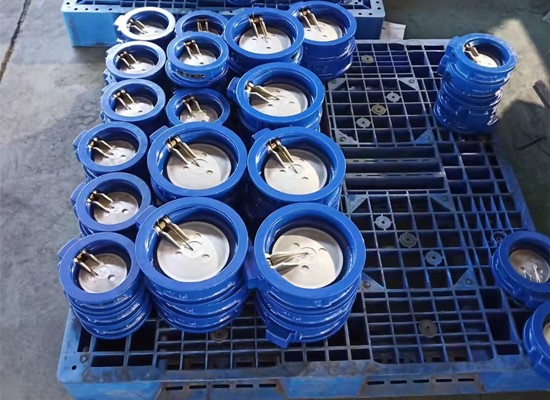1. When installing, pay attention to the direction of medium flow should be consistent with the direction of the arrow voted by the valve body.
2. Install a check valve before the condensate after the trap enters the recovery main pipe to prevent the condensate from returning.
3. Rising stem valves cannot be buried in the ground to prevent the stem from rusting. In the trench with cover, the valve should be installed in a place that is convenient for maintenance, inspection and operation.
4. For some pipelines that require less water hammer impact or no water hammer when closed, it is best to choose a slow-close butterfly check valve or a slow-close swing check valve.
5. When installing a threaded valve, it is necessary to ensure that the thread is intact, and the sealing filler should be coated according to the different medium. The tightening must be evenly tightened to avoid damage to the valve and valve accessories.
6. When the socket-type welding valve is installed, there should be a gap of 1-2m between the socket and socket to prevent excessive thermal stress during welding and the welding seam from expanding and cracking.
7. When installing on a horizontal pipeline, the valve stem should be vertically upward, or inclined at a certain angle, and the valve stem should not be installed downward.
8.Argon arc welding should be used to weld the bottom layer of the welding seam between the butt valve and the pipeline. The valve should be opened during welding to prevent overheating and deformation.
9. Before installing the trap, be sure to purge the pipeline with pressurized steam to remove the debris in the pipeline.
10. Do not install steam traps in series.
11. Diaphragm check valves are often used in pipelines that are prone to water hammer, because the diaphragm can eliminate water hammer when the medium flows back, but it is limited by temperature and pressure, so it is generally used on low pressure and normal temperature pipelines.
12. A filter should be installed before the trap to ensure that the trap is not blocked by debris in the pipeline, and the filter should be cleaned regularly.
13. Valves connected by flanges and threads should be closed during installation.
14. The flow direction of the condensed water should be consistent with the arrow mark on the installation of the trap.
15. The trap should be installed at the lowest point of the equipment outlet to drain the condensed water in time to avoid vapor lock in the pipeline.
16. When installing flanged valves, ensure that the end faces of the two flanges are parallel and concentric with each other.
17. Valves should be installed before and after the trap so that the trap can be picked up and repaired at any time.
18. Mechanical traps should be installed horizontally.
19. If the steam trap is found to run off, it is necessary to promptly drain the sewage and clean the filter screen, check frequently according to the actual use, and repair it at any time if there is a fault.
20.Do not allow the check valve to bear weight in the pipeline. Large check valves should be independently supported so that they are not affected by the pressure generated by the piping system.
21. The condensate recovery main after the trap cannot climb, which will increase the back pressure of the trap.
22. If there is no place to install a trap at the lowest point of the equipment, a water trap should be added at the lowest point of the water outlet to increase the condensate level before installing the trap to avoid vapor lock.
23. The outlet pipe of the trap should not be immersed in water.
24. If there is condensate recovery after the trap, the outlet pipe of the trap should be connected to the main pipe from above the recovery main pipe to reduce back pressure and prevent backflow.
25. Each equipment should be equipped with a trap.
26. The lift-type horizontal flap check valve should be installed on the horizontal pipeline.
27. Install a trap on the steam pipeline. The main pipeline should have a condensate collection well close to the radius of the main pipeline, and then use a small pipe to lead to the trap.
28. If there is condensate recovery after the trap, the pipelines with different levels of pressure need to be recovered separately.
29. Lifting vertical flap check valve needs to be installed vertically.
30. When the mechanical trap is not used for a long time, it is necessary to remove the drain screw and drain the water to prevent freezing.
31.The thermostatic type trap requires a supercooling pipe of more than one meter without heat preservation, and other types of traps should be as close as possible to the equipment.

Post time: Oct-22-2021

